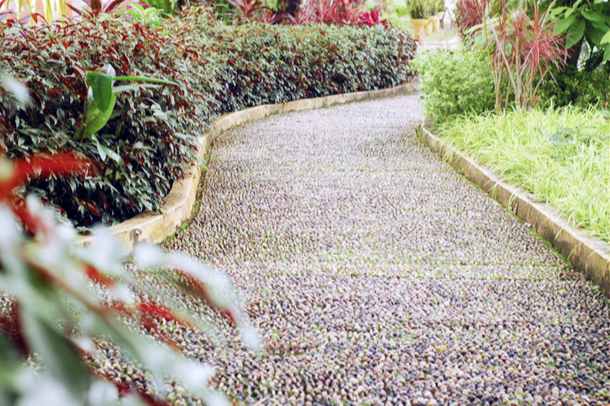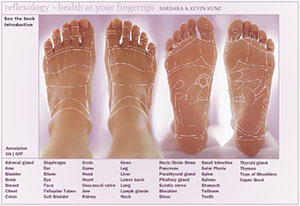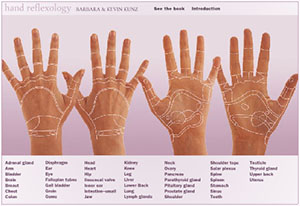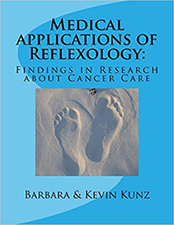Why a Book about Sitting
Why would two reflexology authors write a book about sitting too much?
Why would two reflexology authors write Un-Sit Your Life, a book about sitting too much? It’s what happens to the feet during reflexology and sitting that drew our interest. It’s all about pressure sensed by the feet. Reflexology is the application of pressure to the feet. Sitting is the lack of pressure. One improves well-being. The other, done too much contributes to lessened well-being.
We’ll begin at the beginning with the following excerpt from Un-Sit Your Life.
For me, Barbara Kunz, it started with a newspaper article noting those who sit more, die earlier. Hmmm, I thought, these people aren’t getting enough pressure to their feet since they’re sitting so much rather than standing or walking.
Linking pressure and feet to health consequences was familiar territory to us. Kevin and I are reflexology practitioners, authors and researchers by career. We first realized the value of pressure to the feet when we we worked with paralyzed individuals in 1980.
What we saw then was that reflexology technique applied to a particular part of a paralyzed foot prompted movement of the opposite hand or foot. Literature research lead us to why this would be. We had tapped
into deep pressure sensors in the bottoms of the feet, stimulating a part of the body’s walking mechanism.
In addition, technique application prompted growling of the stomach, sweating, or overall body shivering, responses of the paralyzed individuals’ internal organs. As we found out, internal organs work together with pressure sensors in the feet to help manage the body’s energy expenditure, its metabolism. As noted earlier, pressure sensors communicate whether one is sitting or standing or walking, each requiring a different level of energy expenditure.
We realized what we saw was a reflex effect, automatic, unconscious responses of the body’s tone as pressure was applied to the feet. The value of pressure to the feet was its ability to contribute to balancing basic states of readiness, fight or flight and rest and relax.
The reflex effect explained the impact of reflexology technique application: shaping health and responses from the inner self impacting lifestyle conditions, relaxation and walking abilities. Dosing was important: the systematic application of pressure to the feet over time best produced results.
It was these same ideas we were to apply when we became aware of the problems of sitting too much. When I needed an idea for a writing project, I remembered the Dr. Patel article. Soon I couldn’t get away from prolonged sitting, the idea that is. Article after article, study after study—I was fascinated with what happens when we sit too much. It was the reflex effect at work. Utilizing not only pressure sensors of the feet but also postural muscles of the body had potential to create impact on the inner us, cognitive abilities, walking capabilities and our basic operating system.
We applied the ideas to our lives. We sat less, moved more and utilized reflexology mats, walking barefoot on a varied surface. The results for Kevin were dramatic. One day his pants fell off. We then realized he was losing weight—and that his un-sitting campaign was responsible since neither his diet nor exercise had changed. As noted earlier he would go on to lose 40 pounds in weight and 6 inches to his waist in 8 months. By the way, his weight and waist loss continue as his metabolism has changed.
By this time, my study of prolonged sitting had found both an explanation for what happens as well as a goal. The goal was to create a system to combat the problem of not moving enough. The result is the reflex diet, a menu of techniques and a recipe for dosing, how much and how often to apply to them.
For Kevin, who un-sat his life by getting rid of his desk chair by day and easy chair by evening, it started when he realized this new chair-less lifestyle caused him to lose weight—and it would become over the months 40 pounds and 4 inches off his waistline.
We were hooked both professionally and personally. For Barbara it became a quest for dosing—how much and how often one needed to move about to impact chronic degenerative conditions liked to sitting too much. This list includes: weight, stroke, heart attack, diabetes, Alzheimer’s, cognitive decline, dementia and more.
Kevin began telling his clients how our culture’s chair dweller lifestyle did not benefit our cave dweller metabolism. We are our paleo ancestors, inhabiting bodies designed over eons to be up and about moving most of the time.
We saw a similar pattern to what we saw in reflexology: pressure to the bottoms of the feet caused a profound change in one’s well being. The reflex actions involved in moving are linked to metabolism and more. By using pressure to the feet as you stand and walk, you can take control of your body.
When we sit too much, move too little and do the same things over and over again, the reflex actions involved in moving us about don’t get the workout for which they were designed. Metabolic and other processes are not practiced adequately to maintain the operation of the body as it is meant to be.









